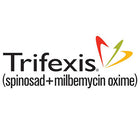Halloween is a fun time for families and pets, but as a responsible pet owner, you may ask important questions like
These are valid concerns, especially since some costumes may restrict your pet's movement, cause overheating, or even create choking hazards.
In this blog, we’ll answer these questions by providing practical tips on how to keep your furry friend safe and comfortable during Halloween.
From selecting the right costume materials to recognizing signs of distress, we'll ensure that your pet enjoys the festivities just as much as you do—without the risks.
Halloween Costume Risks and Safety Tips for Pets
As exciting as it may be to dress up your pet for Halloween, it’s essential to be aware of the risks associated with certain costumes.
Some costumes are fun for us but uncomfortable—or even dangerous—for our pets.
Before you choose that perfect costume, let’s look at a few common risks and how to avoid them.
-
Restricted Movement and Choking Hazards
- Risk: Tight costumes or outfits with dangling accessories (e.g., small buttons, strings, or ribbons) can restrict your pet’s movement, making it difficult for them to walk, run, or sit naturally.
These accessories can also pose a choking hazard if your pet chews on or ingests them.
- Safety Tips:
- Choose a costume that fits snugly but comfortably, allowing for natural movement.
- Avoid costumes with small, detachable parts that can be easily swallowed. If the costume has accessories, ensure they are securely attached and out of reach of your pet’s mouth.
-
Overheating and Stress
- Risk: Pets, particularly those with thick fur, can easily overheat if their costume is too heavy or made of non-breathable fabric. Also wearing a costume for extended periods can lead to stress or anxiety, especially in noisy or crowded environments.
- Safety Tip:
- Opt for costumes made of lightweight, breathable materials, and limit the time your pet wears the costume.
- Always monitor for signs of overheating, such as excessive panting or drooling.
- If your pet appears stressed, allow them breaks or remove the costume altogether.
-
Visibility and Sensory Impairment
- Risk: Costumes that cover a pet’s eyes, ears, or mouth can impair their vision or hearing, leading to disorientation or anxiety. Pets rely on their senses to navigate their surroundings and covering them could increase the risk of accidents.
- Safety Tip:
- Ensure the costume doesn’t block your pet’s eyes, ears, or mouth.
- Moreover, prioritize costumes that allow full visibility and hearing, enabling your pet to stay aware of its surroundings.
- Consider simple, less restrictive costumes like themed collars or bandanas if full costumes compromise their senses.
-
Risk of Tripping and Falling
- Risk: Ill-fitting costumes that are too long or have trailing parts may cause your pet to trip, especially on stairs or uneven surfaces. This can lead to injuries or increased anxiety during the festivities.
- Safety Tip:
- Check that the costume is not too long and does not drag on the ground, especially around your pet’s legs.
- You can trim or adjust costumes to ensure your pet can move freely without the risk of tripping or falling.
-
Costume Durability and Breakability
- Risk: Fragile costumes can break apart during wear, potentially causing harm if your pet steps on or ingests broken pieces. In addition, broken parts can lead to sharp edges that may injure your pet.
- Safety Tip:
- Before purchasing or using a costume, inspect its durability.
- Also avoid costumes with fragile, breakable parts, and choose those made of sturdy, pet-safe materials that will hold up during wear.
Now that we’ve covered the risks associated with pet costumes, the next step is to know how to choose the right one. What makes a costume not only cute but also safe and comfortable for your pet?
Also Read: Must-Have Cat Toys for 2024 - Turn Halloween Into Spooky Fun
Let’s dive into that next.
Tips to Choose the Right Costume or Alternative for Your Pet
Selecting the right costume requires attention to detail, from the materials used to how well it fits. If your pet doesn’t like full costumes, alternatives are there, which let them join the fun without causing stress.
Let’s explore those tips in detail:
Prioritize Pet-Safe Materials
Start by focusing on the materials. Costumes made from breathable, non-toxic fabrics like cotton or nylon are less likely to cause skin irritation or overheating.
On the other side, avoid polyester blend materials or heavy embellishments that can trap heat or be uncomfortable on your pet's skin.
- Tip: Check labels for hypoallergenic materials, especially if your pet has sensitive skin. Fabrics designed specifically for pet use are generally safer and more comfortable.
Choose a Design That Allows Movement
Once you’ve chosen a safe material, the design should facilitate your pet’s natural movements also. Opt for a costume that doesn’t restrict their ability to walk, sit, or lie down comfortably.
- Tip: Ensure the costume fits well around the chest and stomach without being too tight or loose, as ill-fitting costumes may cause tripping or discomfort.
Focus on Simplicity
Overly complicated costumes with multiple layers or accessories can increase the risk of your pet overheating or getting entangled. Simpler designs that capture the Halloween spirit without adding unnecessary complexity are often the best option.
- Tip: Look for costumes with minimal embellishments and avoid those that include dangling parts or sharp accessories.
Consider Alternatives to Full Costumes
If your pet isn’t comfortable in a full costume, there are still plenty of ways to keep them festive without the stress. Halloween-themed collars, bandanas, or lightweight capes can be great alternatives to traditional costumes.
- Tip: Accessories like glow-in-the-dark collars or leashes add to the Halloween theme and enhance your pet’s visibility during night-time activities.
Now that you’ve selected the right costume or alternative for your pet, the next step is ensuring that it fits comfortably and doesn’t cause any distress. Let’s look at some practical tips on how to test the costume for comfort and spot early signs of discomfort in your furry friend.
Also Read: Wickedly Delicious Halloween Cat Treats & Recipes for 2024
How to Ensure Your Pet’s Costume Fits Comfortably
- Do a Trial Run
- Watch for Signs of Discomfort
- Make Necessary Adjustments
- Provide Regular Breaks
Conclusion
I hope this guide has made it easier and more exciting to find the perfect Halloween costume for your pet!
Whether you’re opting for a full costume or a simple festive accessory, your furry friend is now ready to join in the spooky fun while staying safe and comfortable.
With the right materials, proper fit, and a watchful eye, you’re all set for a Halloween that both you and your pet will enjoy.
So go ahead, dress up your pet, take those adorable photos, and enjoy a festive and safe Halloween together—it’s going to be a celebration they’ll never forget! 🎃🐾
Also Read: Fun and Spooky Toys for Your Dog This Halloween 2024
FAQs - Halloween Costume Safety for Pets
Can I leave my pet in a costume for the entire night?
It’s not recommended to leave your pet in a costume all night. Even if the costume fits well, prolonged wear can cause discomfort, overheating, or anxiety. Always provide your pet with regular breaks, monitor their behavior, and remove the costume if they show signs of stress.
What should I do if my pet seems stressed in their costume?
If your pet shows signs of stress—such as panting, shaking, or trying to remove the costume—immediately remove the outfit and give them time to relax. You can offer treats and ensure a calm, quiet space. Consider simpler alternatives like collars or bandanas.
Are there any specific costumes that are safer for cats versus dogs?
For cats, it's best to stick to lightweight, simple designs like collars or capes that won’t restrict movement or get tangled. On the other side, dogs, depending on size and temperament, can tolerate more elaborate costumes, but always ensure they have full mobility and the costume is breathable.
Can costumes cause allergic reactions in pets?
Yes, some costumes may contain materials or dyes that irritate your pet’s skin or cause allergic reactions. Always check for hypoallergenic, non-toxic materials, and if you notice any signs of itching, redness, or swelling, remove the costume and consult your vet.
How can I tell if a costume will overheat my pet?
If a costume is made from heavy, non-breathable fabric (like polyester), or includes multiple layers, it could cause overheating. Ensure the costume is lightweight and breathable, and limit the time your pet spends wearing it, especially if they have a thick fur coat.
Are there any accessories that are better alternatives to full costumes?
Yes, accessories like Halloween-themed collars, bandanas, or leashes are great alternatives to full costumes. They’re lightweight, non-restrictive, and can still provide a festive look without causing stress or discomfort to your pet.
Are there any pet costumes that help improve visibility at night?
Yes, costumes with reflective materials or glow-in-the-dark accessories can improve your pet’s visibility at night, making them safer during evening festivities. Consider adding reflective strips to your pet’s outfit or choosing accessories that make them more visible in low light.
How do I ensure my pet is safe around Halloween decorations?
Keep your pet away from potentially hazardous decorations like lit candles, string lights, or small objects they could ingest. Opt for pet-safe décor and ensure their costume doesn’t get tangled in any decorations, especially around doors or crowded areas.
Can pets wear costumes with masks or headpieces?
While some pets may tolerate masks or headpieces, it’s important to ensure that these accessories don’t obstruct their vision, hearing, or breathing. If your pet shows any discomfort, it’s best to remove the headpiece and stick to simpler costume designs.










